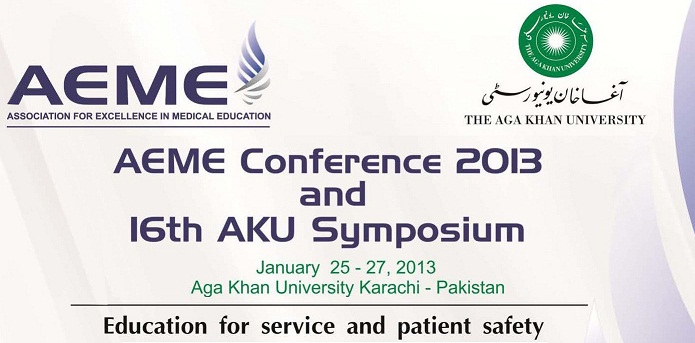Day 1 : Poster Presentations (Theme: Patient Safety)
Mobile phones: a potential source of infection - a comparative study between health care and the non-health care workers in Karachi
Location
Auditorium Pond Side
Start Date
26-1-2013 10:30 AM
Abstract
Background: Nowadays mobile phones are an important means of communication. These are used in an environment of high bacterial presence and become reservoirs for bacterial transmission especially when used in hospitals where these mobile phones become a source of spread of nosocomial infections, a threat to hospital hygiene. The present study was done on the purpose to detect and compare the growth of bacteria on the mobile phones of health care workers (HCWs) and the growth of bacteria on the mobile phones of non health care workers (non-HCWs).
Objectives: To detect the presence of bacterial colonization on the mobile phones of health-care workers and compare it with the bacterial colonization of mobile phones of non-health care workers.
Methods: A cross-sectional study was carried out in 2011. Sterile swabs were wiped over 150 mobile phones equally divided among HCWs and non HCWs. Each participant was also given a questionnaire to fill. The swabs were streaked on to the blood agar. Isolation was done using routine microbiological tests. Then the isolated organisms were tested for antibiotic resistance through antibiotic discs. All the ethical issues were taken into consideration.
Results: The results showed growth on 92 % of the HCWs mobile phones and 85.3% of the non HCWs phones. The most common organisms found on the cell phones of HCWs were MSSA 38% and MRSA 20%. The most common organisms found on the cell phones of non HCWs were MSSA 54% and streptococci 17.3%. 92% of the HCWs were using mobile phones in the hospital while attending patients. 46.7% of the health care workers were carrying their medical belongings with the mobile phones.
Conclusion: The results established the fact that mobile phones are a source of bacterial transmission. As personal hygiene is not at its standard in densely populated city of Karachi, contaminated mobile phones can lead to potential infections. Hand washing practices should be taken up by both the Health care workers and the non health care workers to minimize spread of disease through the mobile phones.
Mobile phones: a potential source of infection - a comparative study between health care and the non-health care workers in Karachi
Auditorium Pond Side
Background: Nowadays mobile phones are an important means of communication. These are used in an environment of high bacterial presence and become reservoirs for bacterial transmission especially when used in hospitals where these mobile phones become a source of spread of nosocomial infections, a threat to hospital hygiene. The present study was done on the purpose to detect and compare the growth of bacteria on the mobile phones of health care workers (HCWs) and the growth of bacteria on the mobile phones of non health care workers (non-HCWs).
Objectives: To detect the presence of bacterial colonization on the mobile phones of health-care workers and compare it with the bacterial colonization of mobile phones of non-health care workers.
Methods: A cross-sectional study was carried out in 2011. Sterile swabs were wiped over 150 mobile phones equally divided among HCWs and non HCWs. Each participant was also given a questionnaire to fill. The swabs were streaked on to the blood agar. Isolation was done using routine microbiological tests. Then the isolated organisms were tested for antibiotic resistance through antibiotic discs. All the ethical issues were taken into consideration.
Results: The results showed growth on 92 % of the HCWs mobile phones and 85.3% of the non HCWs phones. The most common organisms found on the cell phones of HCWs were MSSA 38% and MRSA 20%. The most common organisms found on the cell phones of non HCWs were MSSA 54% and streptococci 17.3%. 92% of the HCWs were using mobile phones in the hospital while attending patients. 46.7% of the health care workers were carrying their medical belongings with the mobile phones.
Conclusion: The results established the fact that mobile phones are a source of bacterial transmission. As personal hygiene is not at its standard in densely populated city of Karachi, contaminated mobile phones can lead to potential infections. Hand washing practices should be taken up by both the Health care workers and the non health care workers to minimize spread of disease through the mobile phones.

